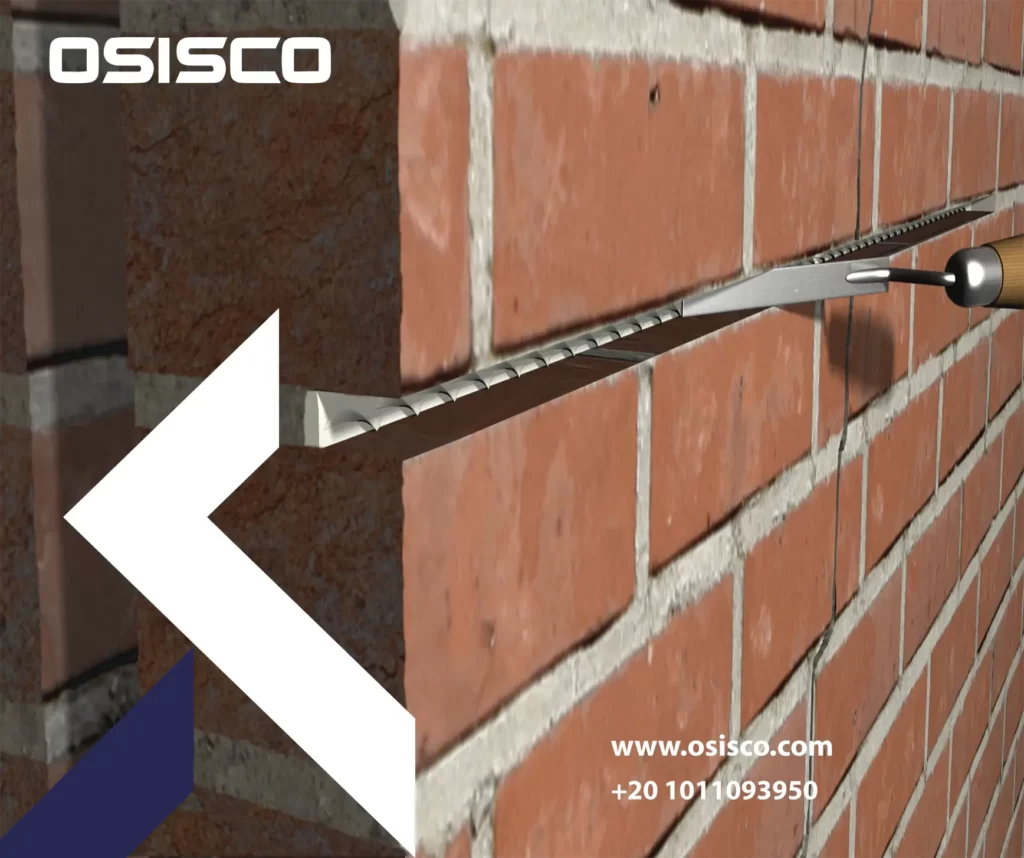
This technique involves the low-pressure injection of fine hydraulic lime grout into cracks, voids, and cavities within the masonry.
It increases building resistance to moisture penetration and restores the material continuity across cracks.
The injection is especially useful for restoring or stabilizing historic structures because the technique does not alter the building’s appearance. It increases the masonry’s durability and overall service life by bonding withes and reducing moisture infiltration.
Surface repairs
Providing means to interrupt the compatible injected full flow at each existing movement joint, preventing it from penetrating into the joint.
Seal around all wall penetrations (including electrical outlets, water cocks, doors, windows, etc.) flashing and beam seats to prevent leakage.
Masonry walls containing significant interior voids such as empty or partially empty collar joints must have a sufficient connection between withes to resist injection pressure, as determined by the injection engineer.
Water flushing
Flushing all injection holes within the designated repair area with water before compatible injected full injection.
Starting at the top of the repair area, a small amount of water is injected into each injection hole to flush away dust and drill cuttings.
When operating outside in hot weather conditions, with temperatures greater than 90 F, additional water is spread into each injection hole to cool and partially saturate the masonry.
Flushing each injection hole in turn.
Repairing masonry by injection
An effective method for repairing or strengthening masonry walls, grout injection involves low-pressure injection of fine cement-based grout into cracks, voids, collar joints, or cavities.
Purpose of masonry injection
Grout injection has several applications: to repair and halt the spread of cracks; to increase a building’s resistance to moisture penetration; and to strengthen retrofitted buildings, particularly historic structures and those in seismic areas.
We can use the previous technique to repair the masonry walls in general buildings and Underground structures.
In the case of injection into masonry, the injection material is injected continuously via low-pressure packers, which are in offset arrangement in the form of a grid, at low pressure (low-pressure process).
In this manner, the faulty joints as well as the capillaries, pores, and hollow cavities in the bricks are filled in with the injection material. We can use different materials in Repairing masonry by injection such as acrylate gel , rubber-elastic, solidary, ecocryl, and polyurethane resin.